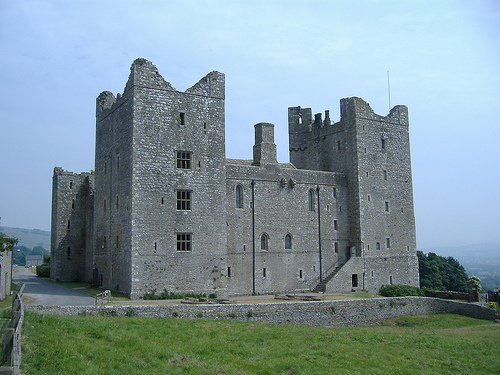

Location: North Yorkshire Map
Constructed: 1378- 1399 by Richard le Scrope
Tel. 01969 623981
Open: daily 11am- 5pm, 19th Feb- 30th Oct
Closed: 23- 25 Dec
Cost: Adults- £8.50
Concessions - £7 (O.A.P, students and children)
Family Ticket - £30.00 (2 adults and up to 3 children/concessions, must
include 1 child)
Official site
Bolton Castle is a 14th-century castle in Wensleydale, North Yorkshire, England. The nearby village of Castle Bolton was named after the castle. An architectural monument of category I, included in the list of ancient monuments. The castle was damaged and looted during the English Revolution, but most of it survived. Never put up for sale and is still owned by descendants of the Scroop family.
The castle was built between 1378 and 1399 by Richard, 1st Baron
Scroop of Bolton. The license for its construction was granted in July
1379, and the contract with the stonemason John Lewin was made in
September 1378. Construction work cost 18 thousand marks. Sir Francis
Knollys wrote that the castle had "the highest walls of any house he
saw".
In 1536, John, 8th Baron Scroop supported the Pilgrimage of
Grace rebellion against the religious reforms of King Henry VIII and
granted asylum to Adam Sedbar, abbot of Jervol. As a result, John Scroop
was forced to flee to his father-in-law at Skipton Castle, and Abbot
Sedbar was caught and executed. The king ordered Bolton Castle to be set
on fire, causing great damage to them; over the following years, part of
the damage was repaired. The Baron received a royal pardon and again
took his seat in Parliament.
Mary Stuart
Mary Stuart, Queen of
Scots, was imprisoned at Bolton Castle for six months. After the defeat
of Scotland at the Battle of Langside in 1568, she fled to England,
jeopardizing the position of the Protestant Queen Elizabeth I. Mary was
initially held at Carlisle Castle under the supervision of Henry, 9th
Baron Scroop, but as she proved unsuitable for this purpose, in July
1568 Mary was transferred to Bolton. Here, Sir Francis Knollis became
her warden, who provided the queen with Henry Scroop's private quarters
in the southwest tower. Of her retinue, consisting of 51 knights,
servants and ladies-in-waiting, only 30 people and six ladies-in-waiting
were placed in the castle; the rest settled nearby. The royal court
consisted of cooks, grooms, a hairdresser, a seamstress, a pharmacist, a
doctor and a surgeon. Bolton Castle was not originally suitable for the
queen's residence, so tapestries, carpets and furniture were borrowed
from local wealthy houses and nearby Barnard Castle in County Durham.
Queen Elizabeth herself lent several pewter decanters, as well as a
copper teapot.
Maria's guards allowed her to walk around the
neighborhood and hunt. Her main entertainment in the castle was the
intricate hairstyles that the lady-in-waiting Maria Seton did for her.
Francis Knollis taught her English, as the Queen only spoke French,
Latin and Scots. She even met with local "papists" (Catholics), for
which Knollis and Scroop were severely reprimanded. In January 1569 Mary
was moved to Tutbury Castle in Staffordshire where she spent the next 18
years until her execution in 1587.
Later history
After the
death in 1630 of Emanuel Scroop, 1st Earl of Sunderland, who had no
legitimate children, Mary, the eldest of his three illegitimate
daughters, inherited Bolton Castle. She married Charles Paulet, 6th
Marquess of Winchister and 1st Duke of Bolton.
The castle is
currently owned by their descendant Harry Ord-Powlet, 8th Baron Bolton.
Bolton Castle, partly ruined and partly restored, is a tourist
attraction run by the Baron's son, Thomas Ord-Paulet, and his wife. On
the territory there is a large garden, including a labyrinth, an
apothecary's garden, a meadow with wild flowers, a rose garden and a
vineyard. For several months, visitors can watch falconry. Sometimes the
castle is rented out for events.
Filming location
The castle
has been the setting for several films, including Ivanhoe (1952) and
Elizabeth (1998).